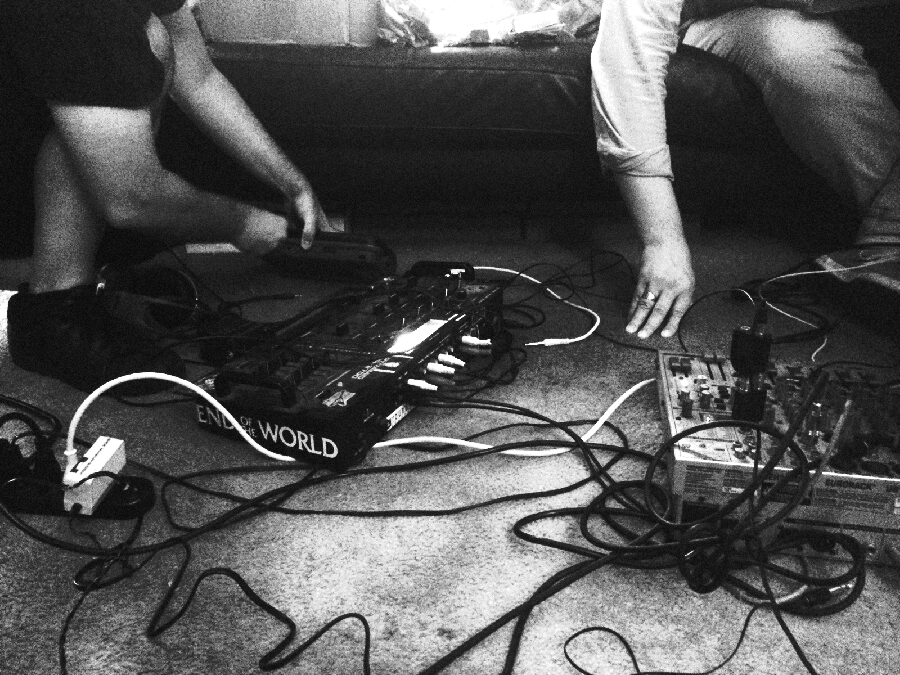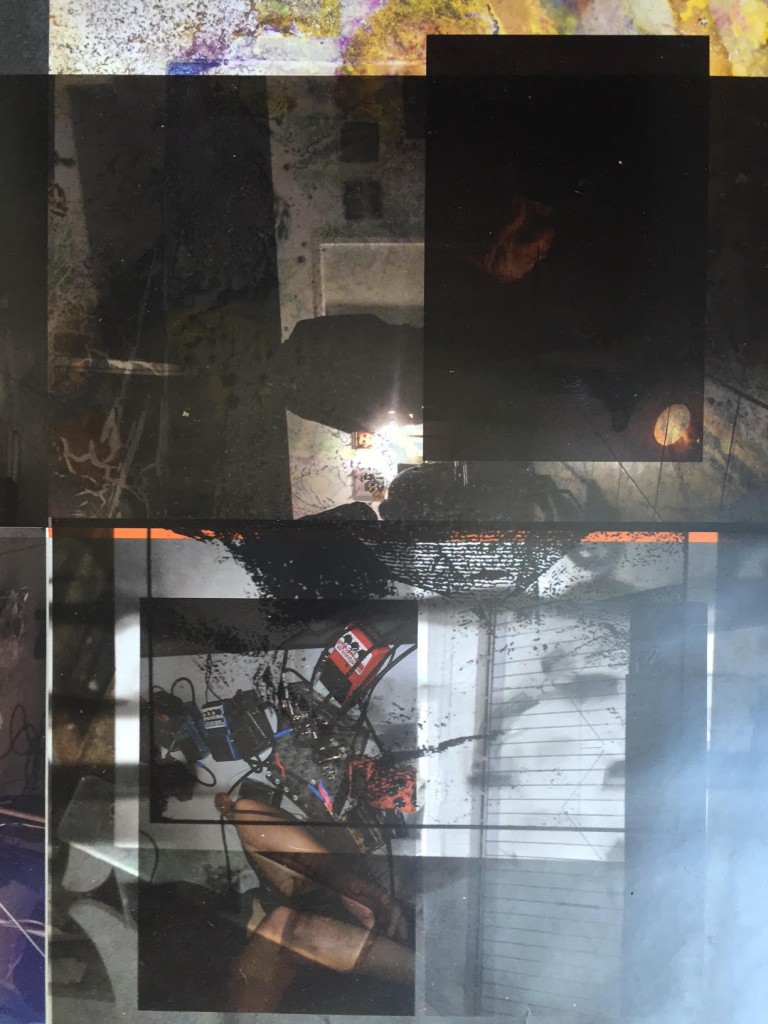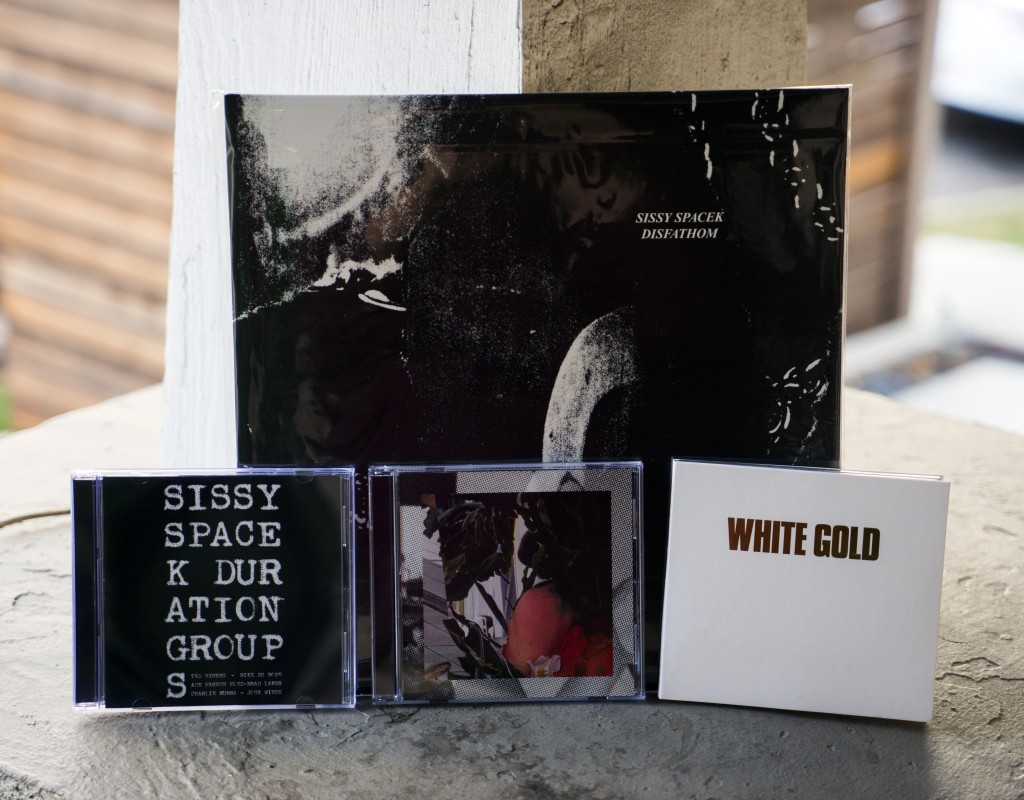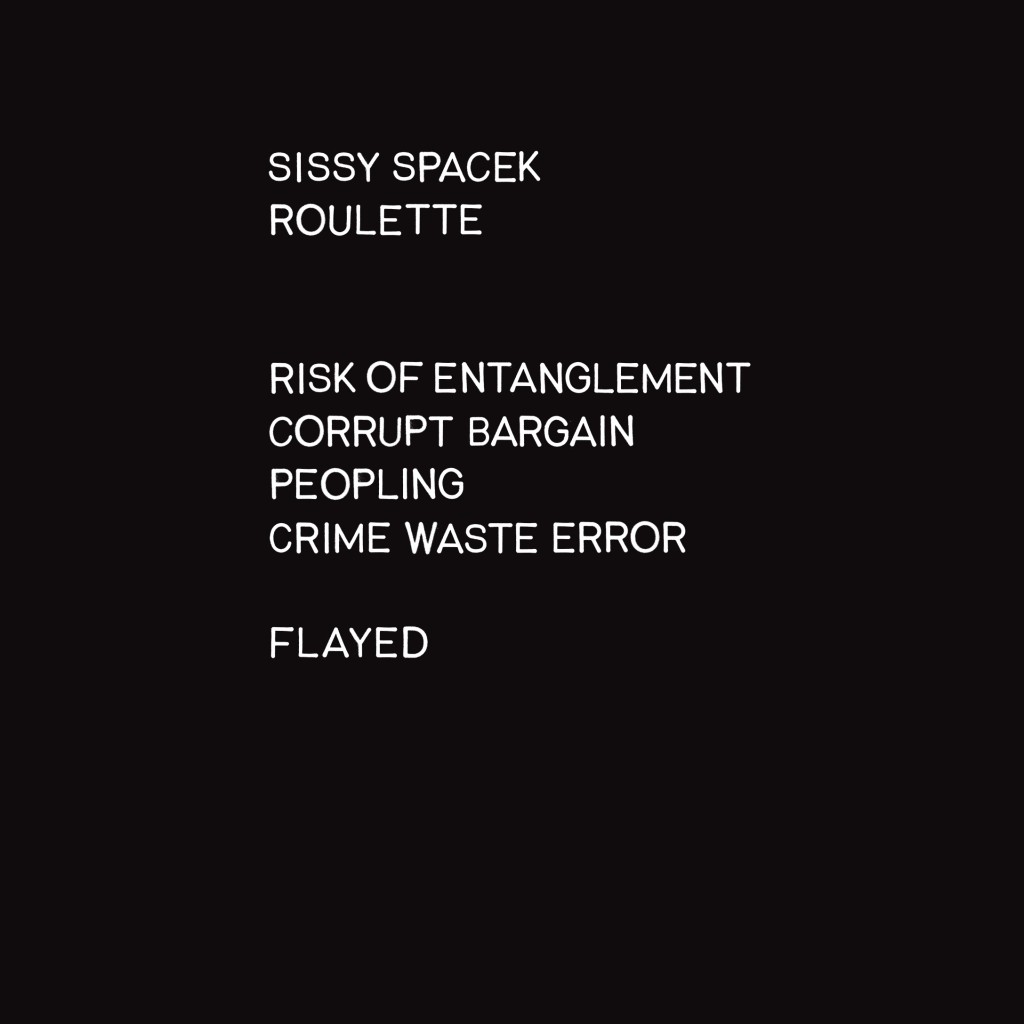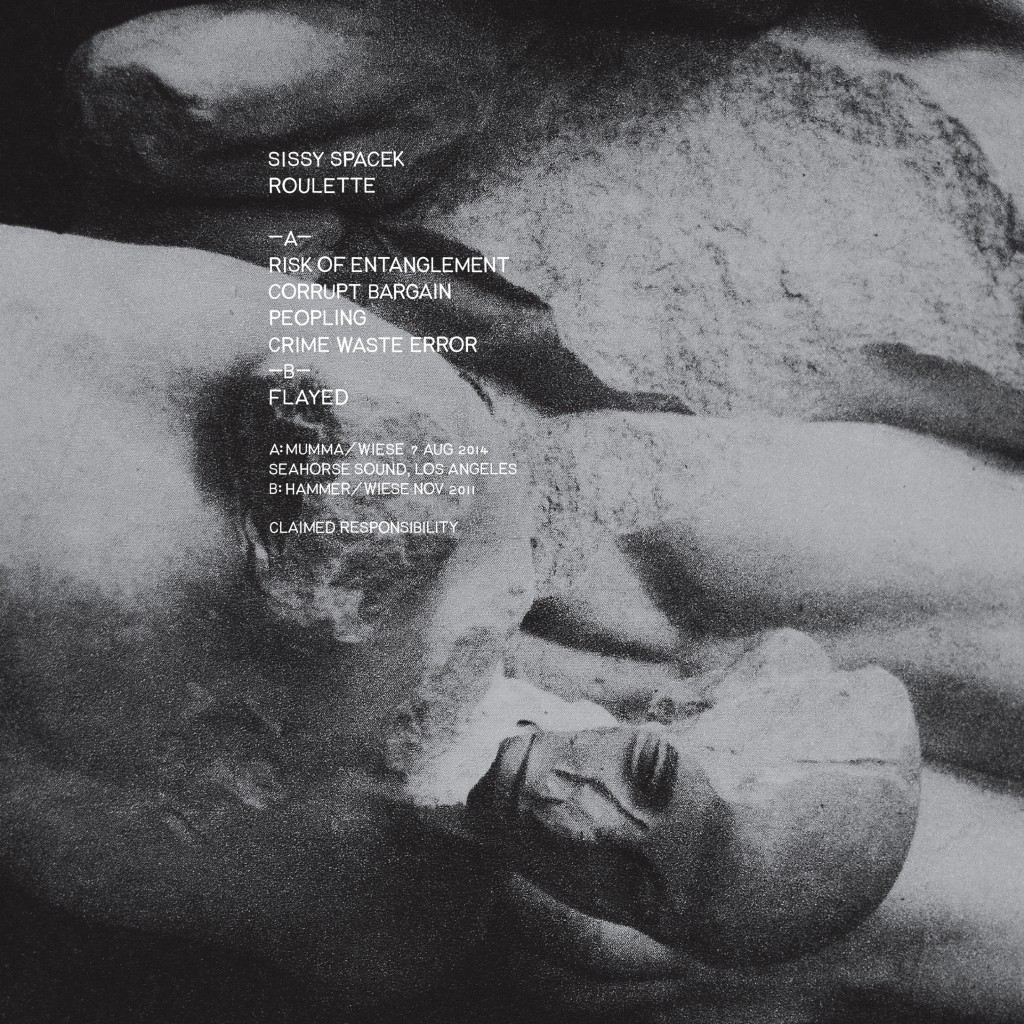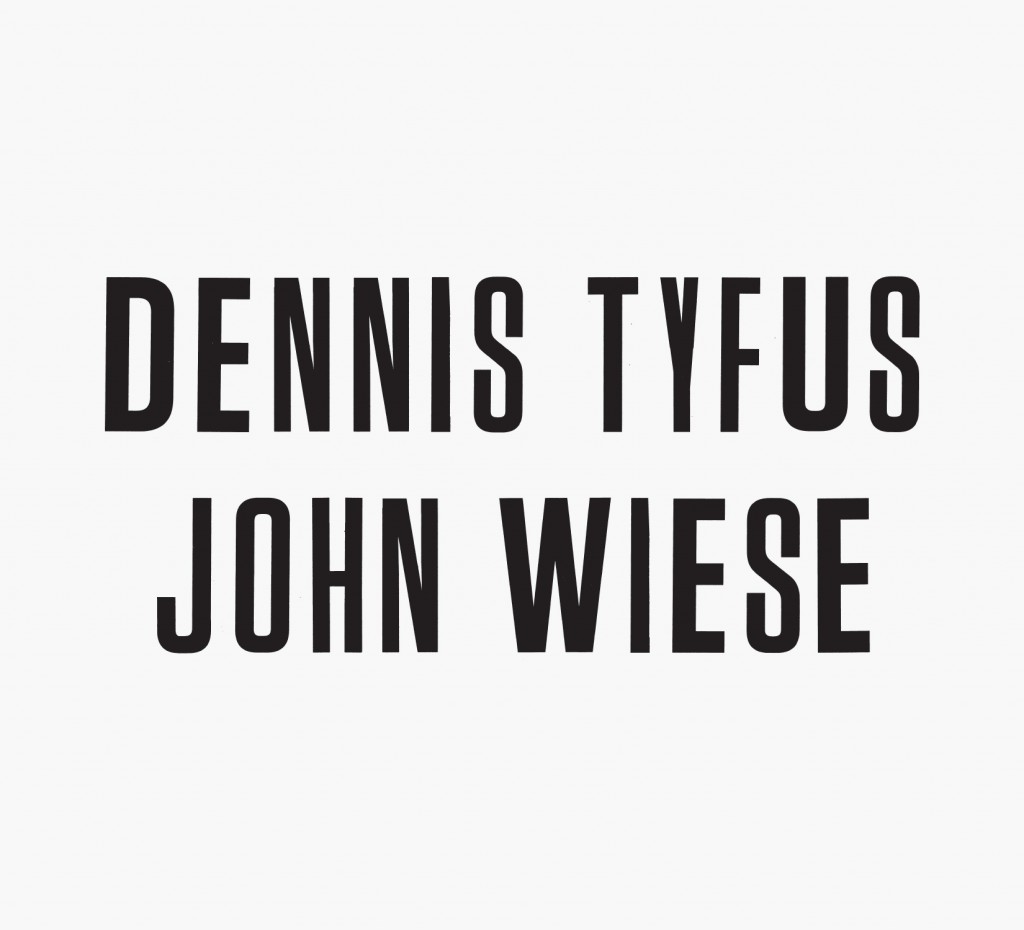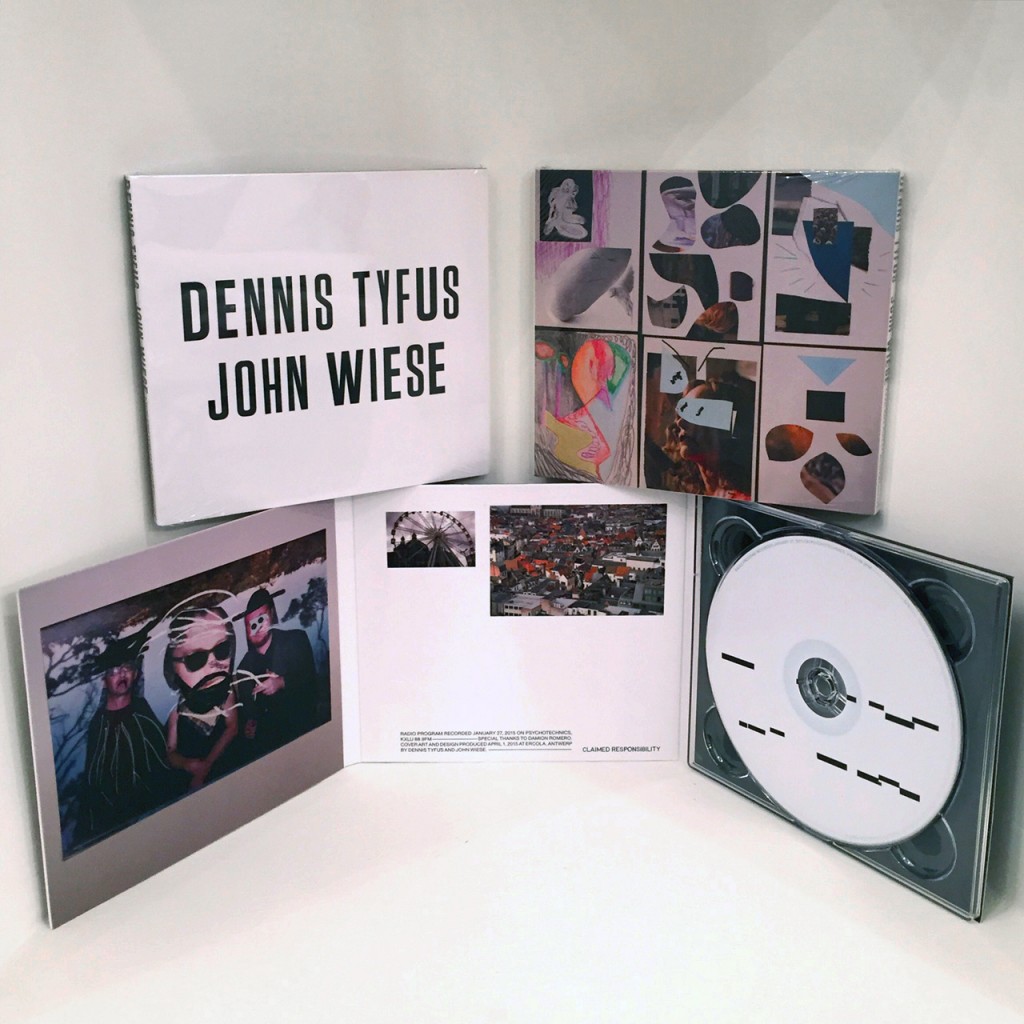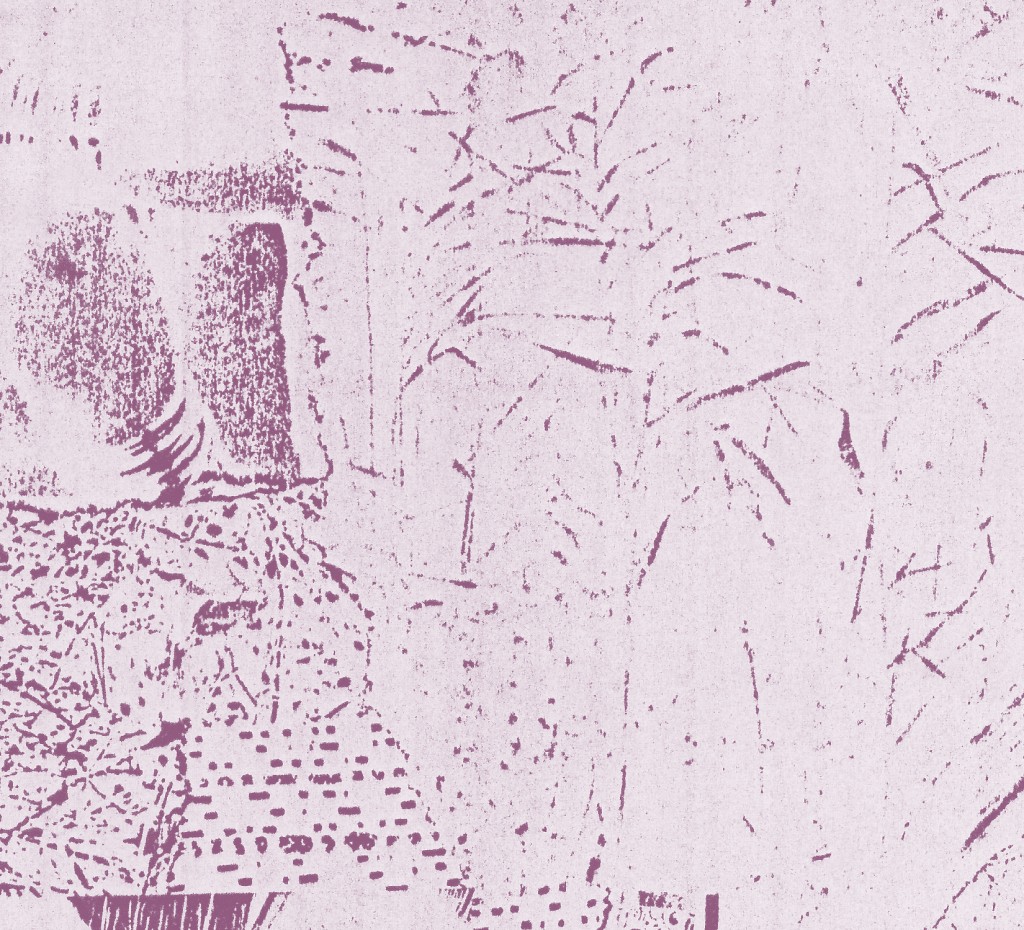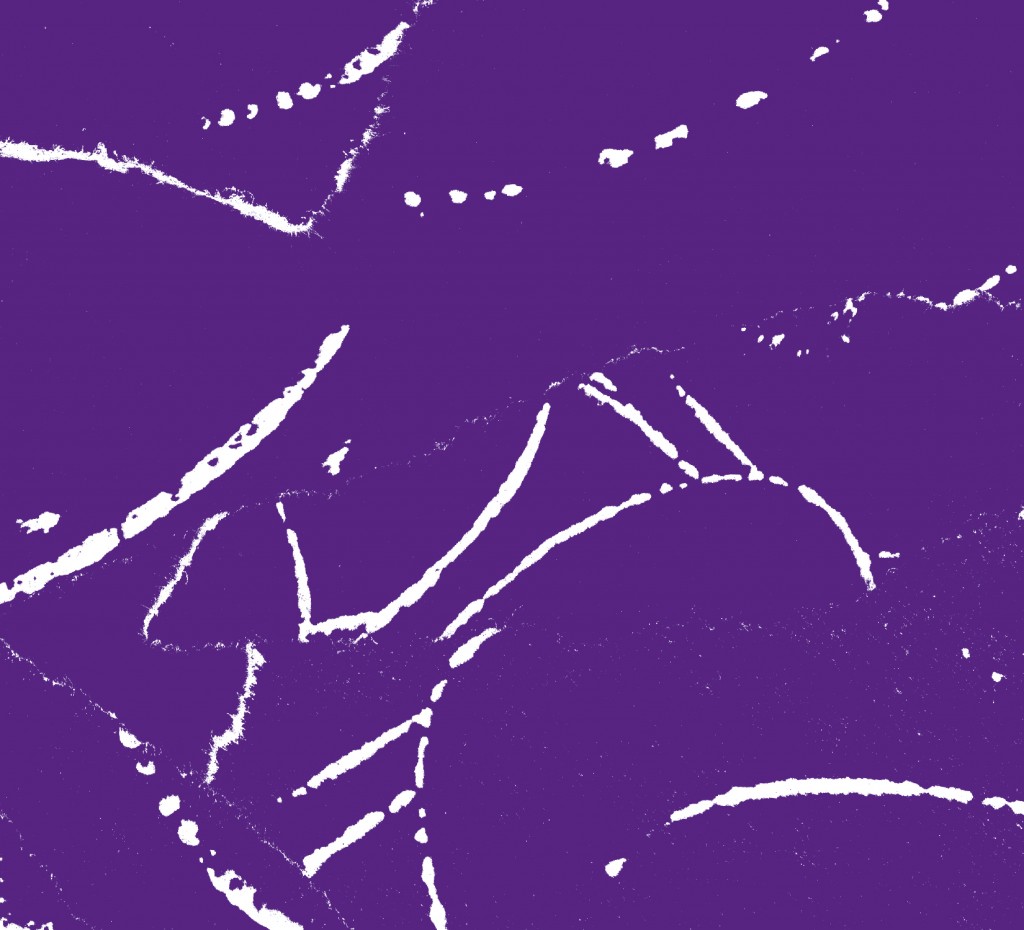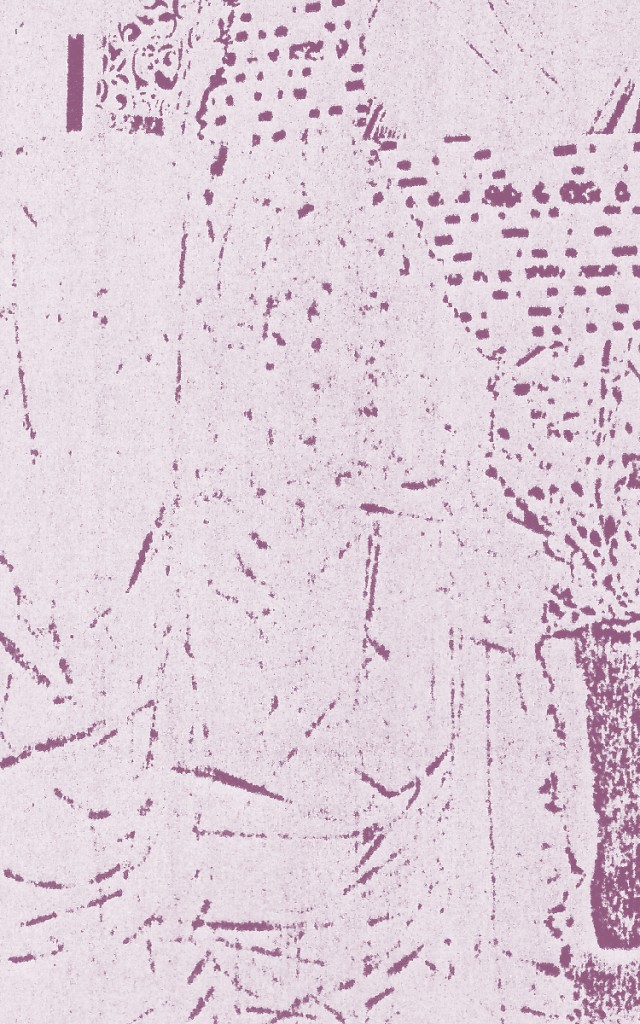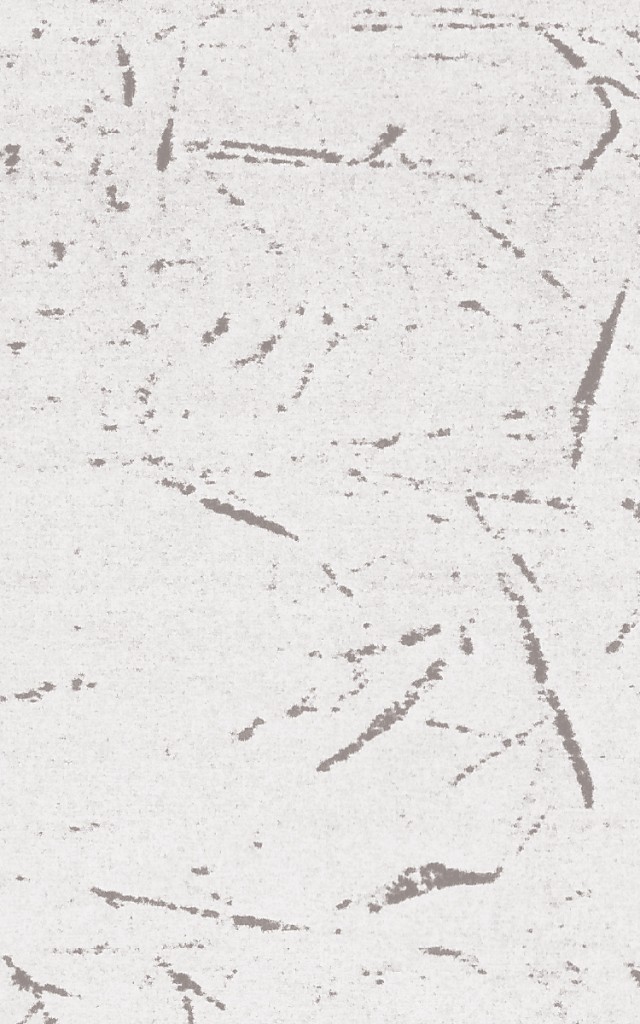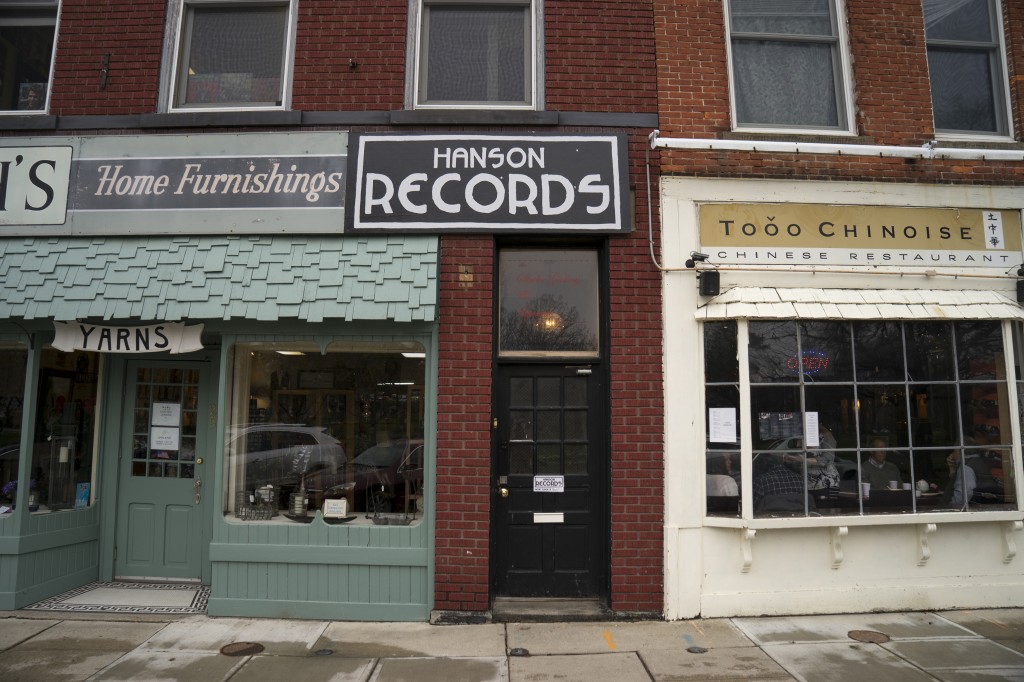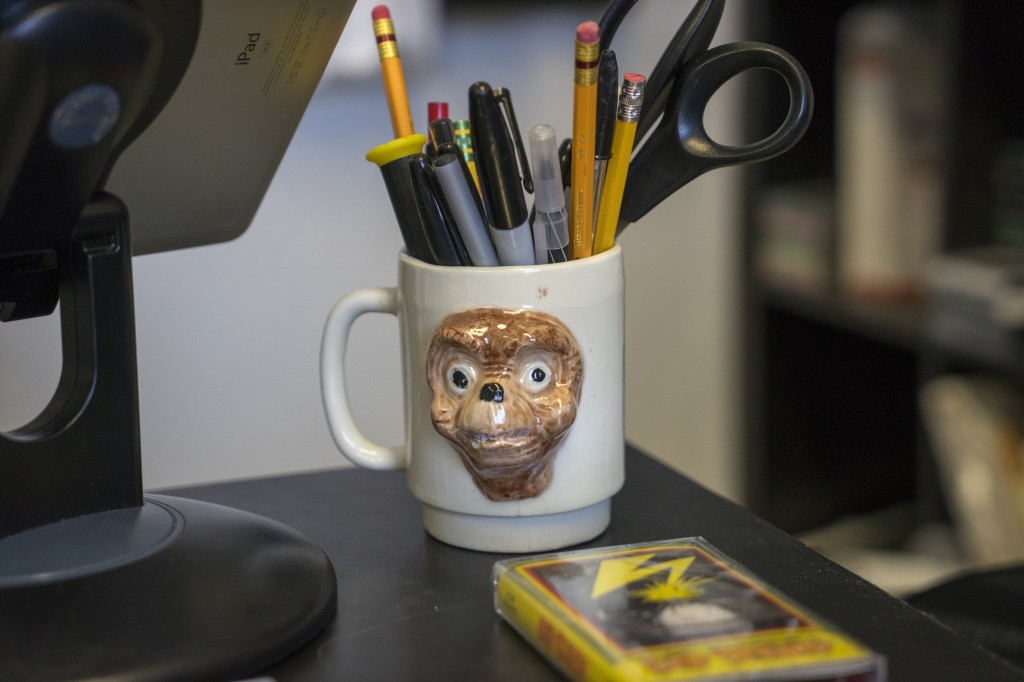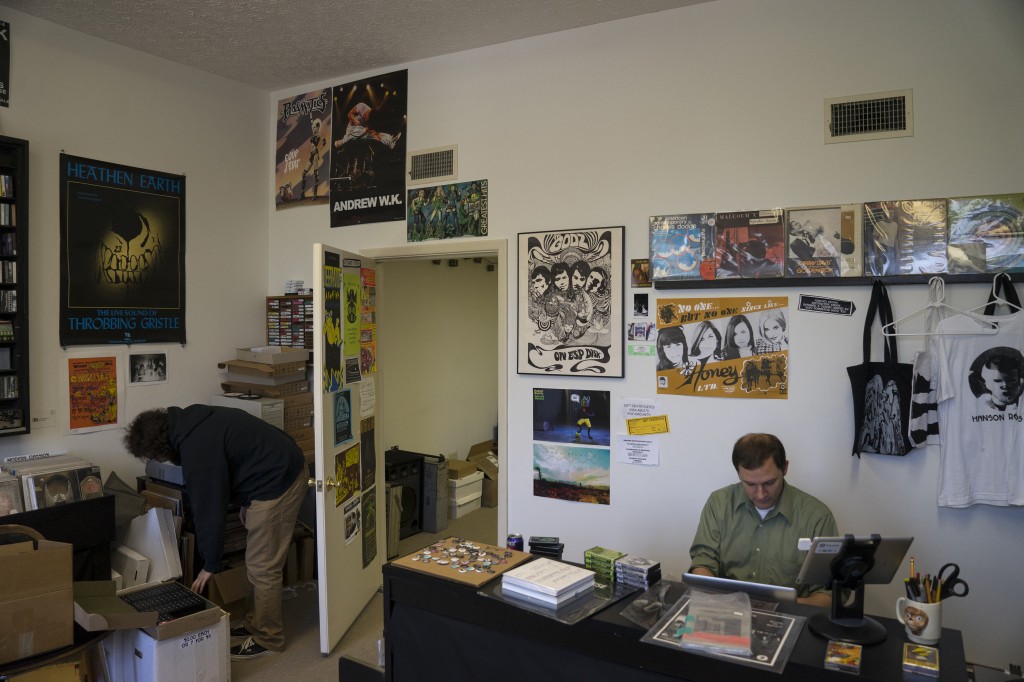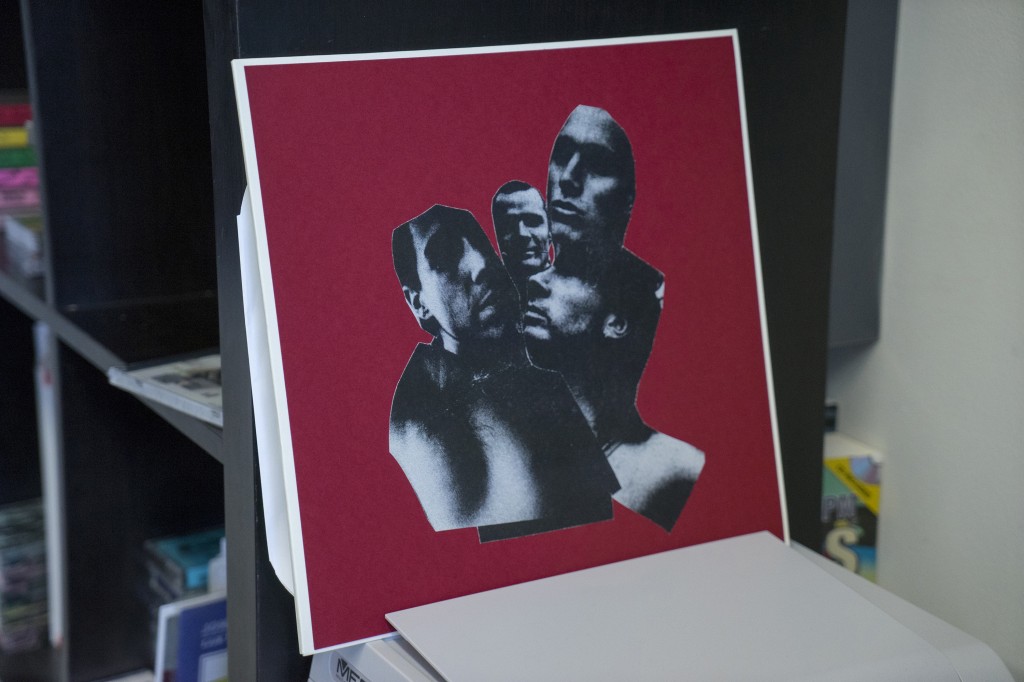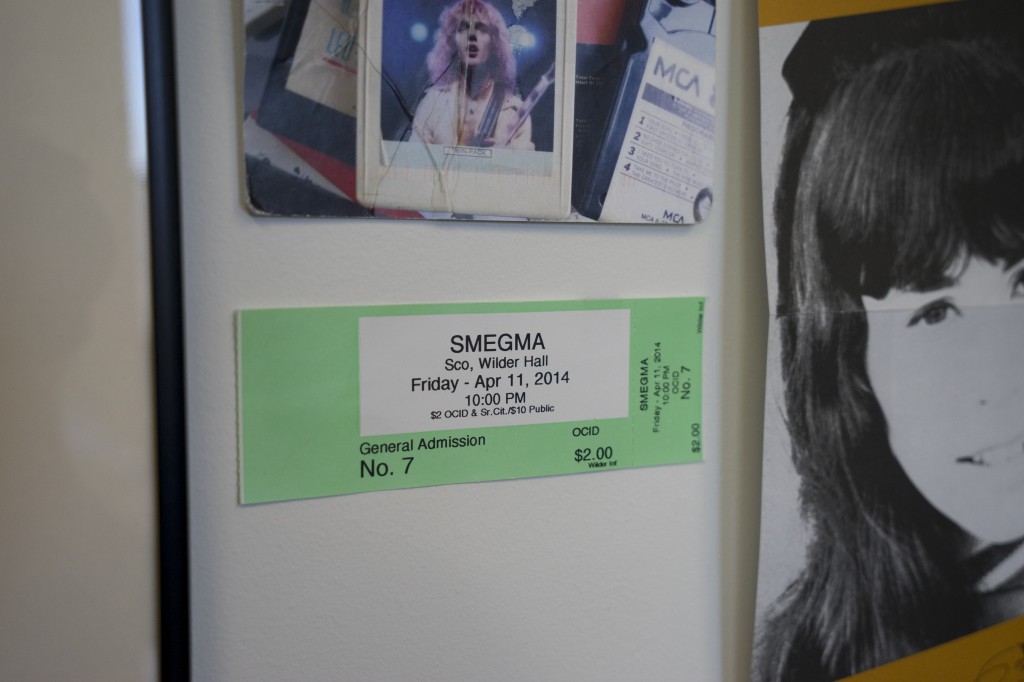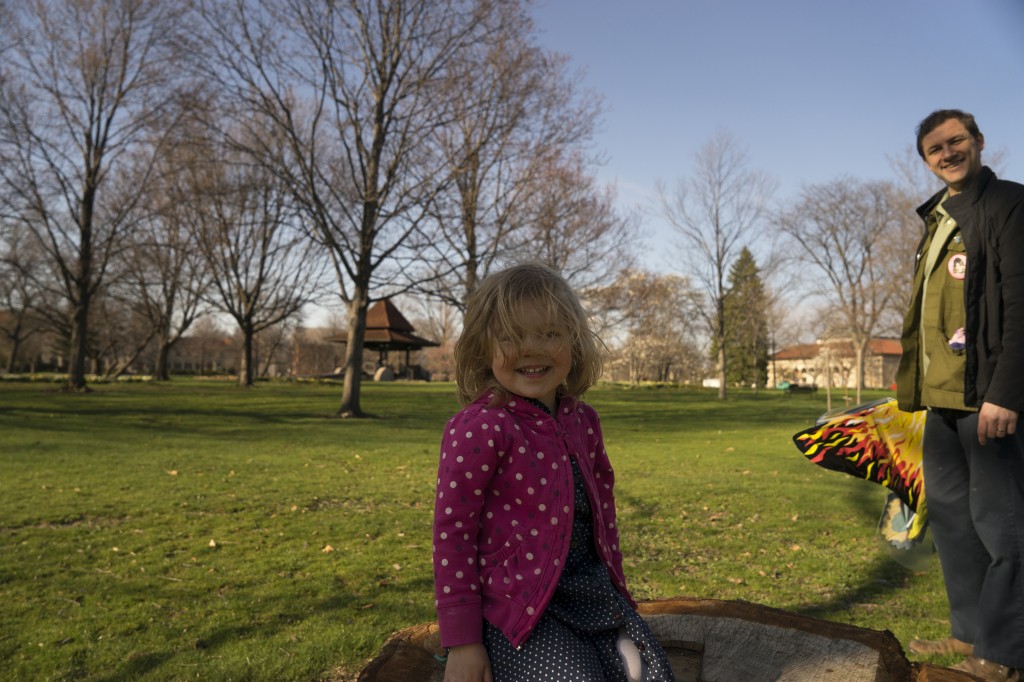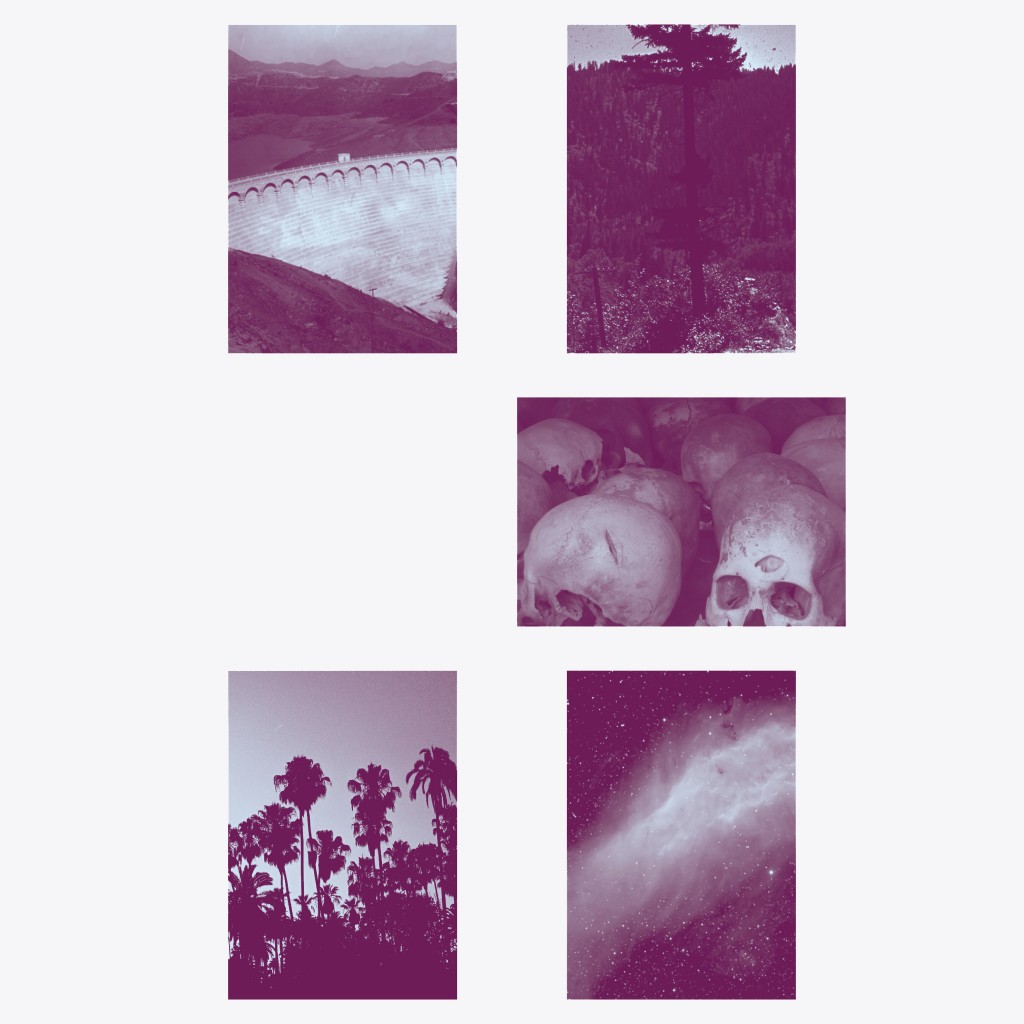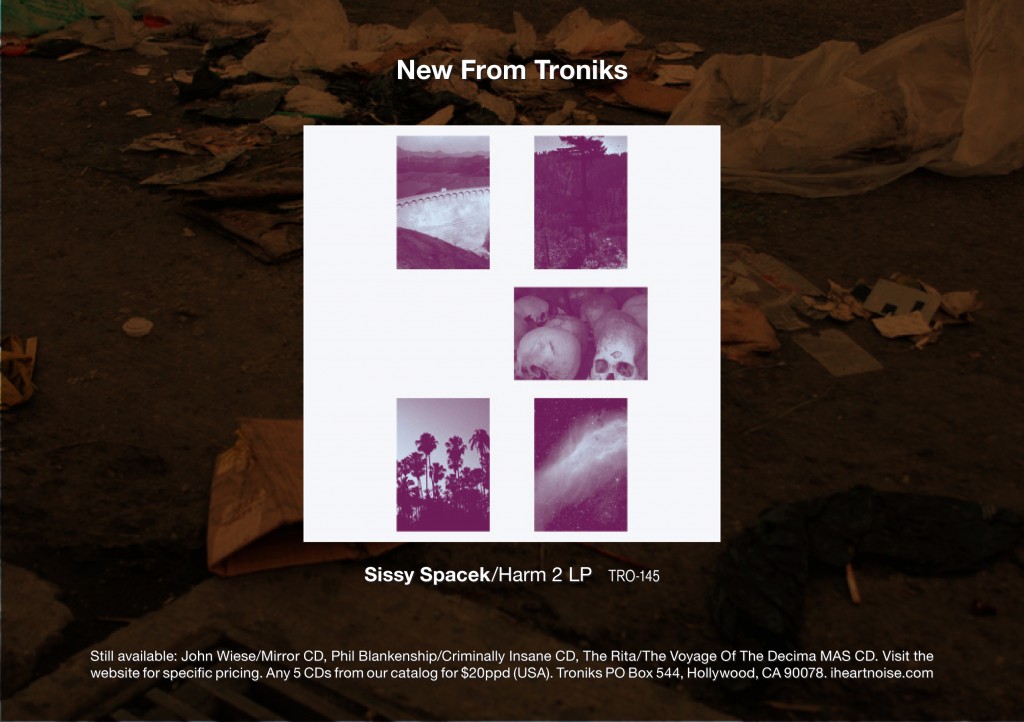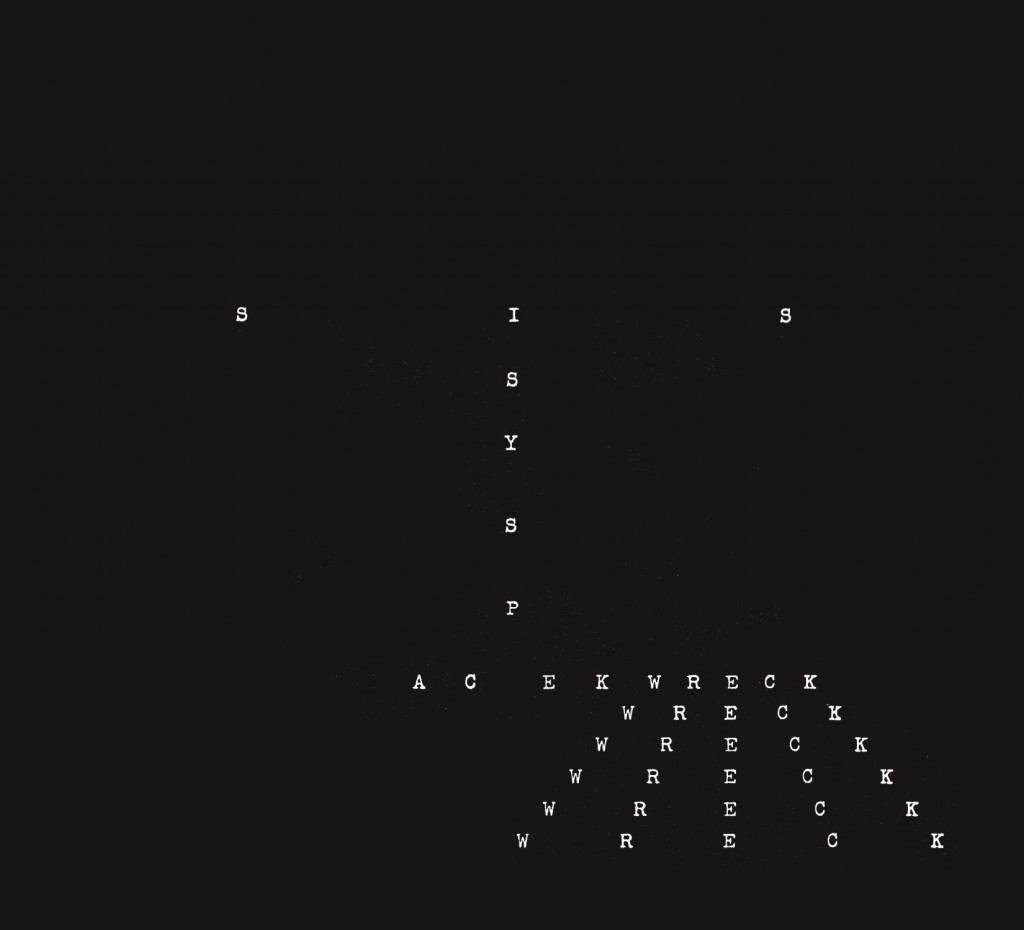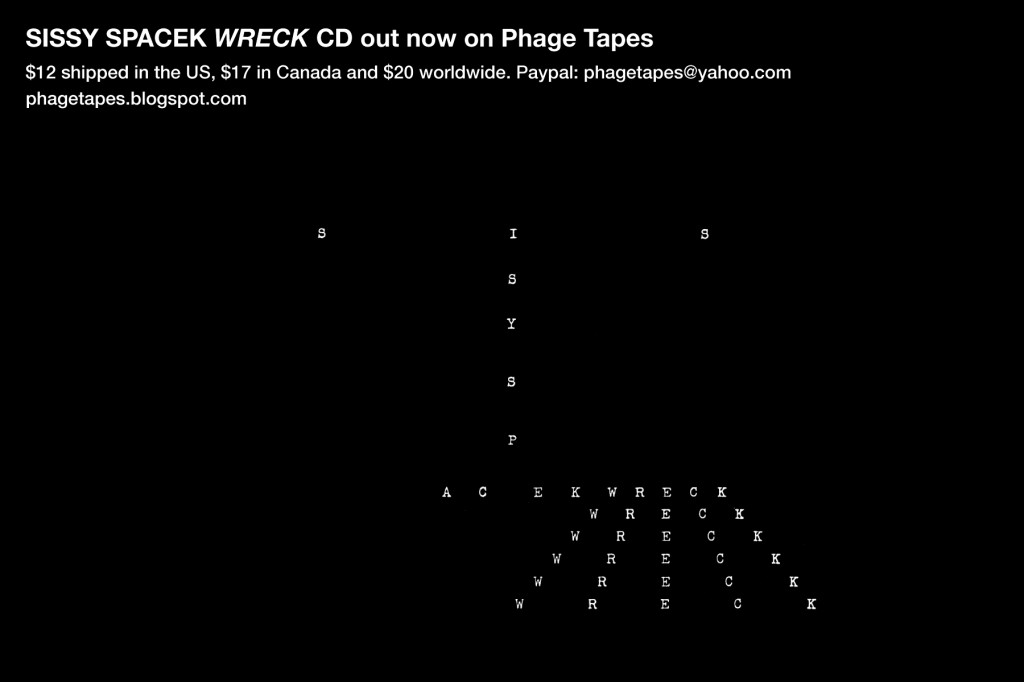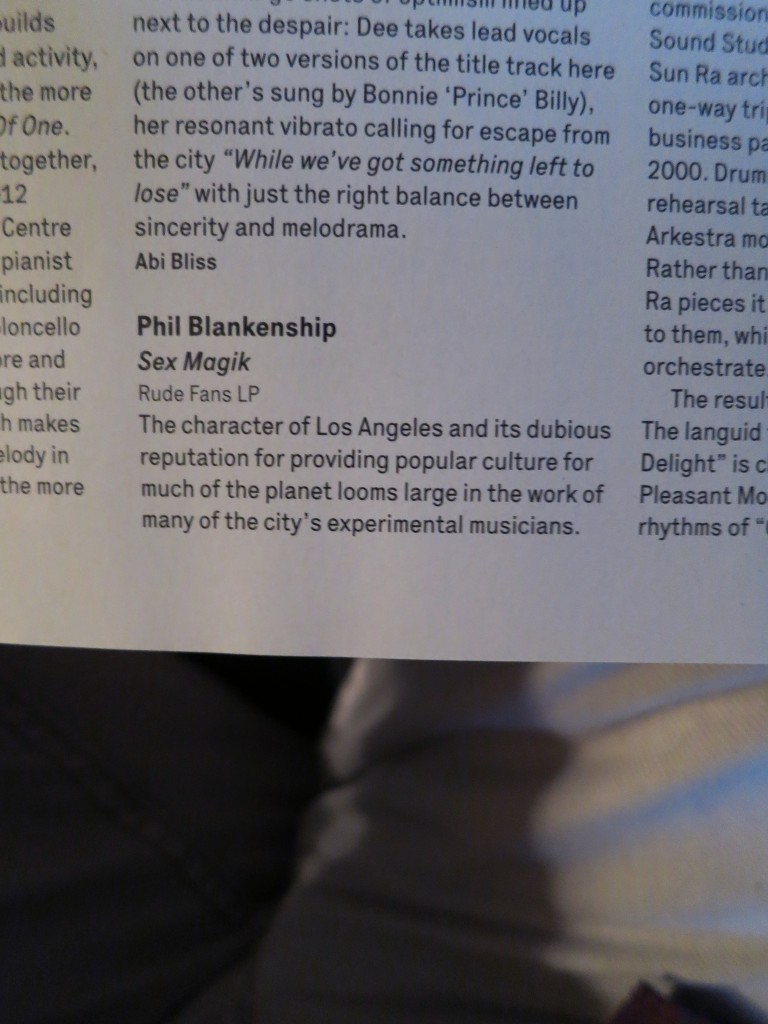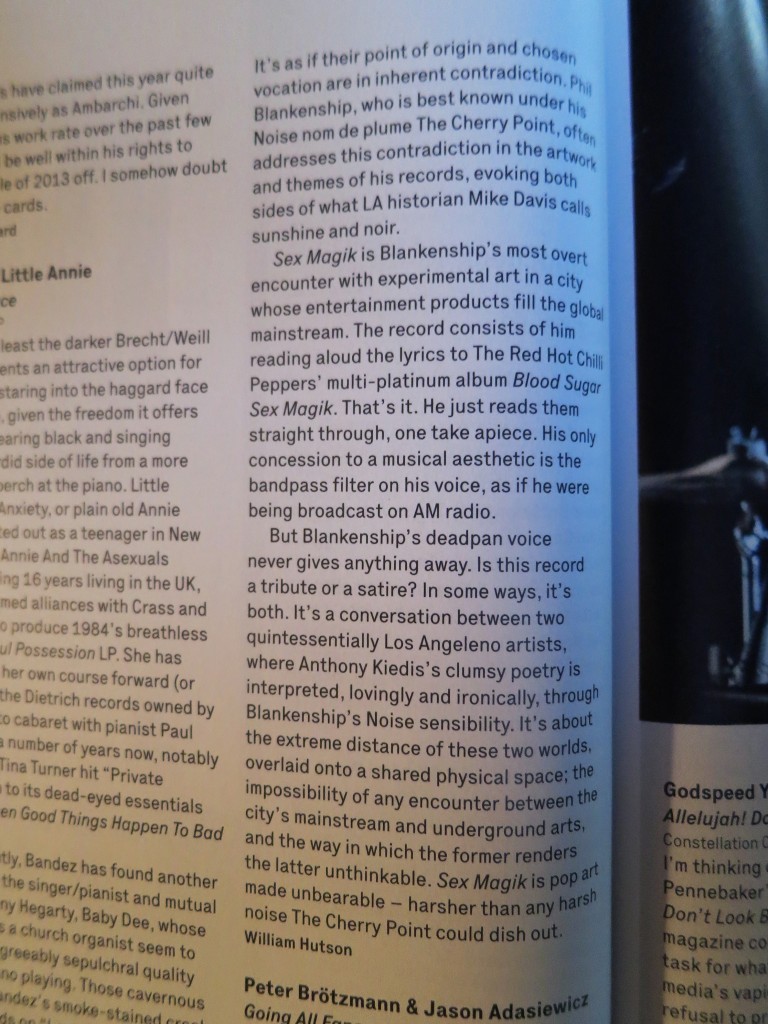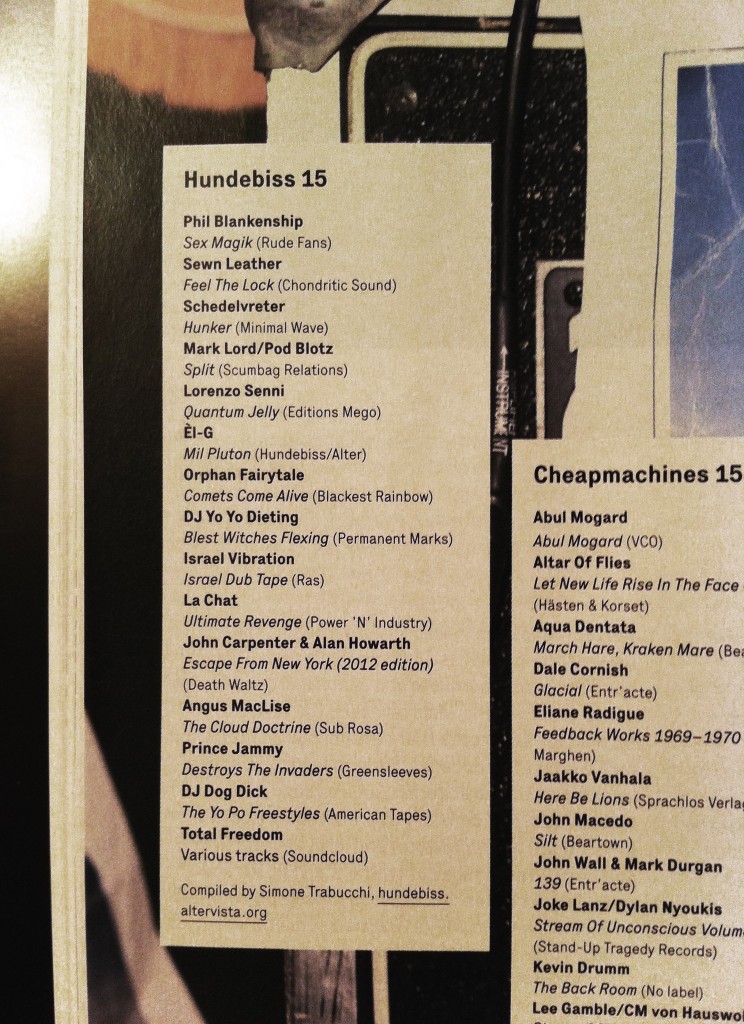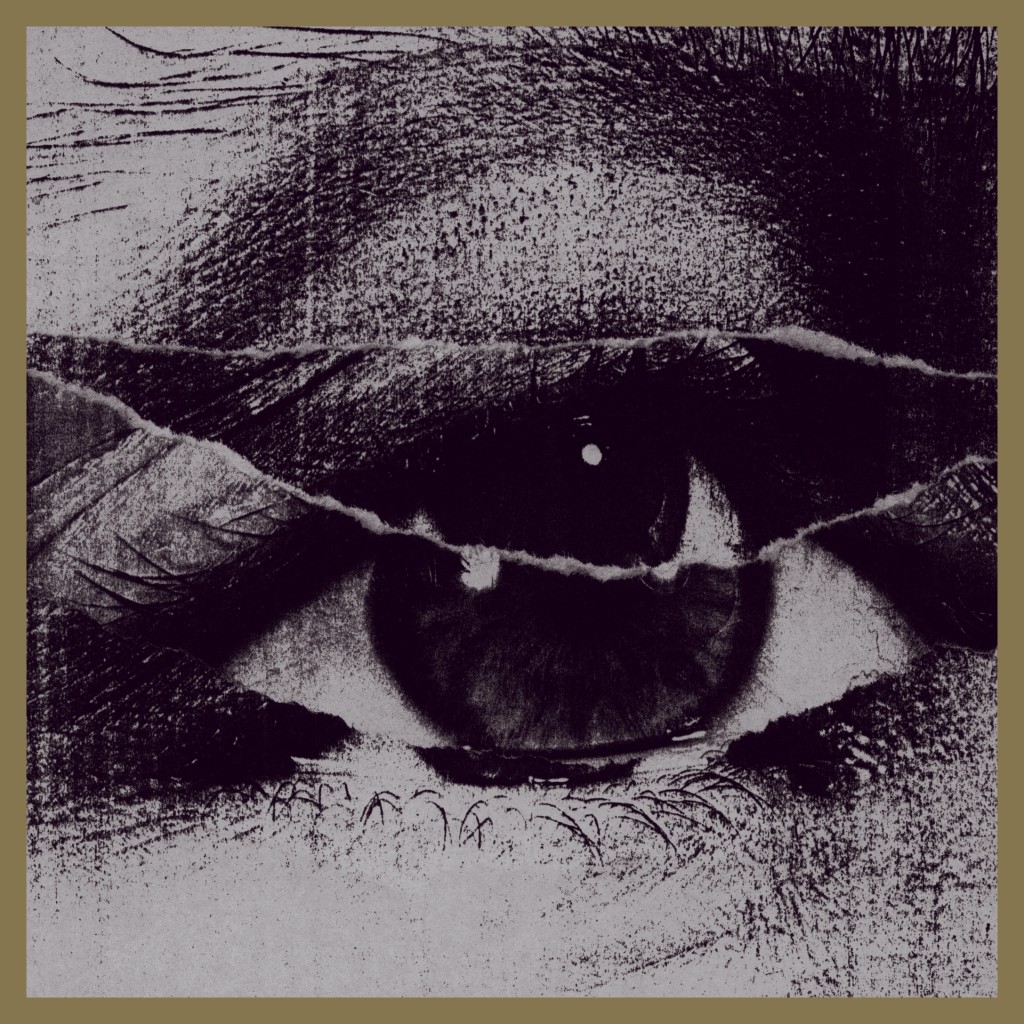Tag Archives: Phil Blankenship
LHD
HYSTERICAL BLINDNESS
Chris Sienko
In the film Lessons in Darkness, Werner Herzog creates a fictionalized narrative around authentic film footage of firefighters attempting to extinguish a lake of burning oil, its flames rising hundreds of feet into the sky, black plumes of smoke rendering perpetual darkness. It is an image seemingly out of Breughel, drawn from human nightmare and incompatible with our concept of a real place on earth. In one striking scene, Herzog films one of the firefighters re-igniting an oil fire that had just been put out. In the reality of the moment, this controlled burn was necessary. According to Herzog, “the gush of oil had created a lake that was approaching other burning fires. If it had ignited, there would have been an even bigger problem, so there was a practical reason for the lighting of this plume.” In characteristic style, Herzog fictionalizes this stunning moment by saying that the humanoids tending these otherworldly flames re-ignited them “because they could not imagine a world without fire.”
This film image and the sonic trajectory of LHD feel connected. John Wiese famously described the project as “a double flamethrower unit from Los Angeles,” but in some ways, the LHD sound resembles one of these controlled-burn units, exerting tight focus and control over miles of unmanageable infernos. The project’s production era was short, from 2002 to 2007, and the entire output fits comfortably on four CDs, a notably compressed corpus considering that plenty of artists in similar sound spaces see fit to release that much material several times a year, or even in a month.
Though they never played a live set, the sound and methodology of LHD acts as a center of gravity to the entire 2000s Los Angeles sound, presiding like the invisible host of a party, one who is felt in every room but never appears.
Los Angeles
The story of Phil Blankenship is inseparable from the story of the Los Angeles film community. Calling him a cinephile is like calling Hollywood a place where a few films get made. As the manager of an historic theater specializing in original 35mm screenings, Blankenship lives and breathes movies. His collection of strange and rare VHS tapes made him a talking head on several documentaries about the format (Adjust Your Tracking and Rewind This!), while his collection of original film prints make him a go-to resource in the world of 35mm repertory cinema, and not just in LA. Blankenship’s love of films translates directly to his preference for extreme sound. His solo project The Cherry Point drips with references to ‘80s slashers, vigilante movies, Giallo cinema, and all manner of micro-budget jaw-smashers. Blankenship’s list of recommended films, included as an insert to RRR’s The Best compilation, displays a coherent, obsessive appreciation of the language of film not just as picture, but sound—It’s no surprise that he released a CD of just the audio from the sub-underground 1975 mind-roaster Criminally Insane, in which an obese woman kills anyone and everyone that prevents her from eating. “THIS IS NOT A NOISE DOCUMENT,” wrote Blankenship by way of description, “IT IS A FEAR DOCUMENT.”
John Wiese came to Los Angeles in 1998 and studied at CalArts, having honed his sound-work in his hometown of St. Louis. Unique in the field of fast-cut abstract sound and possessing an immediately recognizable graphic design style, Wiese’s Helicopter label has put out hundreds of releases, many by himself and his 20+ year project Sissy Spacek, all of them displaying impeccable attention to sound, mastering, and graphic design.
Though similar in many ways, Blankenship and Wiese each derive different sources of inspiration from their adopted hometown. Blankenship famously hosted the Heavy Midnights film series, four-walling theaters, selling tickets, and paying for the prints himself. He lives among the film fanatics, even if every act of viewing is intensely personal.
Wiese, on the other hand, praises Los Angeles for the specific type of isolation that its widely-spread layout and tangled, oversaturated highway system has engendered. In an interview with the Los Angeles Times, Wiese says, “Due to the size, geography and transportation issues, L.A. tends to create very specific groups of people, that see each other at specific times in specific places… As a result, it can generate some fairly esoteric ideas and results.” In a sprawling city that feels more like 50 small towns, the decision to engage (or not) in the concept of community is left up to each individual to accept or reject as desired.
Blankenship ended his first project, Lefthandeddecision, around 2002, and proposed something new to Wiese, who immediately agreed. “Around this time, Phil decided to draw that project to a close. However, he had received a number of offers to release records. Instead of abandoning them, we decided to start a new project called LHD (a commonly used/informal abbreviation for Lefthandeddecision that had been used throughout the project’s existence) that would be our new duo project. My work at this time was generally more known as dynamic and high-contrast (of course with plentiful exceptions), but as a whole, I think the project was headed in a direction that Phil had established.”
Blankenship says the transition from Lefthandeddecision to LHD involved a lot of trial and error, “trying to figure out the exact sounds I wanted to make and the way to create them. I was looking for a collaborator to help push me even further, while exploring mutual obsessions.” The two released a split 7-inch in 2001, but it wasn’t enough, says Wiese. “As Phil and I have a common connection in our sound drive, I think it made sense for us to dispense with our series of splits, etc. and realize a project that was our unified vision.”
No community
Casting one’s mind back to 2002–2005, noise as a genre and a community had begun moving away from 1990s referents toward more performative elements, a penchant for garish, neon costumes, multi-media live shows and records with elaborate conceptual frameworks. Through all this, the city of Los Angeles, like Blankenship’s beloved film Criminally Insane, remained defiantly negative and abrasive, distanced visually and sonically from joyous abandon.
In an interview Wiese conducted with Sam McKinlay of The Rita, he notes, “Sam described a ‘Los Angeles sound’ in the early 2000s, which he felt was as specific as a ‘Japanese sound’ (not the same, but as identifiable…), which I thought was interesting.”
Blankenship’s promotion of Sam’s work in 2004 coincided with the rise of the intentionally restrictive genre terms “harsh noise wall” and/or “militant walls.” While such signpost terms sowed a vast field of likeminded performers, it was a far cry from what LHD, whose first collaborations pre-date these codified sub-genres, was trying to accomplish.
Wiese praises Blankenship as someone whose combination of dedication and obsession brought likeminded artists not only under the same umbrella of his Troniks and PACrec labels, but also to a larger audience. In a community where pressing large quantities of anything skews between ill-advised and commercial suicide, Blankenship pressed 1,000 copies of acts like The Rita, Gruntsplatter, and Roman Torment, none of them big stars at the time with a guarantee of financial return. Clearly, the results proved Blankenship’s strong vision—he not only released records in generous quantities, but he sold them; his bulk-volume pricing structure also places him in a lineage with the PURE and Ground Fault labels, feeding the cash-strapped underground with tastes of projects both famous and obscure while ensuring that these mid-2000s signpost records endure over a period of decades: many of the PACrec CD releases are still available to younger listeners who weren’t around to hear them the first time.
Blankenship demurs. “I was mainly concerned with what I thought sounded good. If I helped get good sounds out there that may not have otherwise found an audience, that’s a legacy I’d be happy to have. For all the things I accomplished, setting up many live shows wasn’t one of them. Bob Bellerue and his Los Angeles era-defining venue Il Corral deserves a lot of credit for putting in so much effort to help coalesce the ‘LA sound’ of the mid 2000s.”
LHD never played a single live show. “I really wanted us to never play live in front of an audience,” says Wiese. “In this era, there were a lot of noise shows going on and I always felt a huge, perplexing destruction of the suspension of disbelief. It’s hard to have a consuming, immersive experience when you see someone standing at a table, expressing an embarrassing display of ‘intense emotions’ towards some pedals. Perhaps their sound was entirely rooted in the frustration of malfunctioning equipment? (Why was everyone always having such difficulty with their gear?) I strongly believe that sound does not need a performative element to it. I’ve had my deepest connections with sound while in my own space, alone, listening. Social environments are often a distraction; however, I understand their larger function.” Understanding, of course, is not the same as participating.
Social context is the destruction of the work
Blankenship and Wiese agreed early on that it was important not to describe their work as ‘Noise,” much less “Harsh Noise,” “Harsh Noise Wall,” or other common genre tags of the time. It was important within the parameters of this project not to affix to an existing scene, but to exist and explore outside of it. Comforting pillars of support like scene, community, common understanding and social cohesion weren’t relevant to LHD’s existence, and even worked against it. Wiese felt the work belongs to anti-social tendencies, to despair, isolation, and depression. “Social context is the destruction of the work,” he says. “I want to listen to LHD recordings at home, by myself. While they play, I sit and listen. That is the activity.”
Blankenship makes it plain. “Wiese & I would talk and collaborate and discuss and push. LHD makes LHD sound.”
“LHD Sound”
The project’s works are divided into two separate 2CD sets. Even Still collects all of the group’s 7-inch and vinyl sides (literally—disc two is made up of four single LP sides). In Mono compiles the four CD releases.
Listening to Even Still with all of the tracks end-to-end and with no pauses for flipping records on the turntable reveals an unnerving focus. Each of these personally crafted voids are the sonic embodiment of the stock film phrase “Don’t move a muscle.”
Wiese believes the 7-inch is the best format for the project “because it underlines an inherent proof of concept in the work, but also is so terse that it requires the undivided attention of the listener. LHD is active listening, not background music.” Blankenship agrees. “The 7-inch can be the perfect format. The time constraint and costs involved encourage putting your best foot forward—all killer, no filler. I love the ritualistic process of the putting the needle in the groove, flipping the record over, etc. It takes work while the sound gives you a reward.”
In other similar projects, contrasting sonics, fast editing, a textural and volume variances are used to ramp up intensity. They act as a series of chemical injections that make the “burn” of the piece get hotter and hotter, whether it’s a pure blue flame of propane or the dirty orange flame of a campfire with a gas can tossed into it. On each LHD 7-inch side, it’s clear that one tone or mood is being exactingly explored and magnified. In these concise statements, Blankenship and Wiese work in tandem to reach a specific level of heat and keep it precisely focused, even if it means extinguishing and re-igniting parts of the oil fields, in order to achieve perfect stasis, a perpetual blinding, searing flame bringing heightened awareness of one’s every screaming nerve ending.
According to Wiese, “in contrast to my other work at the time, the clear difference to me seems to be the sense of movement. Most of my other works were using cutting/juxtaposition/transitions to exploit this, but in LHD, it was (some pieces more than others) the opposite direction. LHD is full of editing, but editing can also be used to create stillness, or perhaps a sense of ‘non-movement.’”
The nine singles on Disc One are single-minded and utterly precise in their strategic triangulations. One might even be able to distill each single into one word. For instance:
“Lock Up”: SMOLDER
“Veiled”: PARCHED
“Los Angeles”: PARALYSIS
“Normandie”: SNAPPING
“Asthma”: TYPHOON
“Hands of the Priestess”: BIFURCATION
“Hotel Fire”: GYMNASIUM
“Rau/Wasp”: TOPPLING
“Fascination”: BLINDED
When thinking of LHD’s approach in contrast to peers of the time, one can imagine the movement of a sonic “body,” a sound that is constantly changing, building, rising, and whiplashing via edits, much like a living organism. This sound-body is moving, oozing, flailing, twirling, lurching. Inside that body may also be organs that also move and snap and vibrate, break, and subdivide, creating additional movement. You can focus your ears on either aspect, but the main focus is on the movement of the sound-body itself.
In recordings self-identifying as HNW, said body stays motionless, and the insides stay nearly motionless as well, like a neutralized bacterial cell. The appeal is falling into its accommodating, monochromatic void.
LHD is neither of these. It’s made up of strong interior motion but with very little motion of the body itself. Any temptation on the part of the creators to let the sound progress, to change, to mutate on its own is violently snuffed out as Blankenship and Wiese use their remorseless focus to reign in the beast, force it to stand stock still, even while its guts churn and grind and its knees flex and buckle. The sound-body doesn’t move, but there is movement within, a tearing of tendons and muscles against the restraints. While listening, you live in a paralyzed suspension while your insides and mind race at a million miles per hour.
Recording sessions were long explorations, carved and shaped into discrete chunks later by Wiese. “We primarily used Phil’s setup at his house. We recorded directly to a CD-recorder, both of us routed through his mixer live and monitoring using headphones (both as a practical consideration and for total immersion).” Blankenship notes, “Even though we were only using headphones to monitor, recording sessions felt LOUD.”
From here, we see the exploration of what Wiese describes as ‘making bare a sound that might be hidden.’ “Neither Phil or I approached this work as musicians, or with concern for virtuosity in our sessions. The material is created and shaped to our final intention. To me, this operation takes place much more in the mind than the body.”
These punishingly loud headphone sessions could run 45 minute or more, according to Wiese. “It was pretty impossible to uphold for longer than that. There seems to be 16 LHD releases. I could imagine that’s about how many recording sessions we did with that project. I think most of the shorter releases were the essence of much longer recordings.”
The four 20-minute pieces on Disc Two carve a wide swath while maintaining LHD stasis. Triple Void [Chondritic Sound] features one track with Greh Holger and another with Gerritt. The former is bleak like a beast howling into an abyss, the latter like a lone wail across a barren tundra. Trap [Troniks] features the most minimal LHD cover, a black on black silk screen of the group’s austere typography, and contains 18 minutes of smoldering volcanic churn. This sounds like the quintessence of LHD: “Burning in hell with no relief.” Electrophorous [Jryk] occasionally resembles the Power Electronics genre, a militaristic, pockmarked crackle that builds to an oily black smoldering. “Capri,” originally half of a split LP [Troniks/Truculent split release], focuses on burrow/crumble/stuttering textures, nearly sputtering out before a peal of feedback resounds and the whole machine skids sideways through the finish line, engulfed in flames.
When asked if combining all these deliberately short/compressed works into lengthy CD sets would alter the intention or effect of the work, the two were nonplussed. Wiese says, “LHD’s intent is opacity. The collection of shorter works into a compendium doesn’t betray our vision — this body of work was produced in small increments and thus yields a result unobtainable without this process. It is collected as a monolith but with great detail.” Blankenship agrees. “The large box sets help reveal the purity of our obsessions. Though everything was conceptualized separately, the releases work in unison to create something larger than a single record.”
For In Mono, the second collection, three of the CD releases are combined onto the first disc, while the fourth resides alone on Disc Two. Curtains, a short CD on Blankenship’s PACrec label, is highly scorched, but contains an uncommonly propulsive atmosphere. There are five short tracks over the disc’s 20 minutes, making the effect similar to listening to five single tracks from Even Still. There are no pauses between the tracks, but each operates in its own autonomous zone. Several pieces here would make great, dynamic compilation tracks, but in context, the strange movement of each is ultimately immolated by the finale, a factory fire of a track aimed at halting thought and critical analysis.
Young & Restless [Blossoming Noise] is very short at 17 minutes, bookending tense stuttering movements with a scorched-earth centerpiece.
Opaque [PURE] is a full 38-minute album and, true to PURE standards, is doggedly mid-range in its frequencies, pale dry fires burning in a ravaged forest, and marks a return to the “DON’T MOVE A MUSCLE” stasis of the singles. There are moments of dynamic, ear piercing intensity, but ultimately, this album is the evocation of an aching, depressed mental state, a mind encumbered with poisonous emotions and waterlogged into mental stasis. The title Opaque is apt.
Limbs of the Fawn [Misanthropic Agenda] is a single 36 track. If this wasn’t the duo’s final recording session, it certainly sounds like the natural terminus, a purified ascent to the top of the mountain. For all 36 teeth-clenching minutes, LHD suspend the listener in a spinning core of heat and hysterical blindness, the absolute center of the furnace, the white-hot core, maximum temperature, so hot and so bright, you can’t even see the walls any further and can feel every nanosecond in hyper-attenuated detail. The record encircles you, a tumultuous high-speed cacophony with almost no movement of the sound-body, while deep inside, swarms of thumb-sized fireflies blaze and shriek.
Wiese references his “Exhausted Spectral Incantation” 7-inch, a record containing a single full-frequency lock groove, as close kin to LHD. “To me, LHD, like this piece, is a destruction of time. Non-linear in a sense (again, flipping the coin between a concept being about perceived action or non-action, depending on the deployment). Imagine viewing time-based work from another dimension, flatly. To me, these ‘non-moving’ works could be the closest we could experience to a summation of time. The ‘Exhausted Spectral Incantation’ piece, likewise, is a lock groove, which removes the linear concept of beginning and end, and instead puts it in the hands of the participant as a personal experience. But I think it’s not so different to listen to the “Veiled” 7-inch, for example. It goes back to this idea of experiencing sound through an object in your own space, in your own experience.”
A concise lifecycle
LHD’s output was recorded between 2002 and 2007, with a peak in 2005, according to Wiese. “I do think LHD needed a cut-off point, not due to anything interpersonal (in fact, Phil and I have never really stopped collaborating), but to mark the time when this very specific thing emerged and happened. I think the concept that LHD was working in was fully realized in 2005, and it makes sense that there were a couple years on either side. LHD is absolutely from that time.” Blankenship adds, “LHD felt complete and we were happy with it. Sometimes you watch a movie or read a book and you wish the director / artist had known when to end. LHD is complete, but that won’t stop us from working on other projects together.”
The two most common collaborative projects between Blankenship and Wiese are White Gold and Sissy Spacek.
Originally credited to The Cherry Point and John Wiese on an album of the same name, the project White Gold inverts LHD’s timeline—while LHD collaborated intensely and regularly for five years, White Gold has released a single record every five years: in 2007, 2012, and most recently, in 2017. The two have traded LHD’s short period of intense collaboration for a series of long gestational periods between White Gold activities.
Now entering its 21st active year, Sissy Spacek has traveled through various musical and amusical territories, largely influenced by Wiese’s formative discovery of Grindcore, Death Metal and other types of extreme metal in the early ‘90s. Much of Sissy Spacek’s output can be grouped into precise configurations and sonic strategies of related interest and influence, and all of it acts as an extension of these early extreme metal influences. Wiese believes that Sissy Spacek and LHD came from the same wellspring of Grindcore and extreme metal, and both were extensions and variations of these sounds: “Grindcore from noise from Grindcore from Hardcore from Punk, etc.,” he says. Recent Sissy Spacek recordings have included Blankenship in a special subgroup alongside staple performers Wiese and Charlie Mumma, and the three explore unique sonic territories from other incarnations of the group. Recordings of this subgroup include Harm [CD], Harm 2 [LP], Slow Move [CD], Wreck [CD], and the recent Corpus [CD].
On looking back nearly 20 years, the two are clearly proud of the work but unsentimental about the notion of a legacy or nostalgia. “It feels more than the sum of its parts to me,” says Wiese. “I think the LHD sound will be unified in these new presentations, and instead of being a collection for those without, it is really more of a final monolith. If we consider 2002 to be the first official session, 2021 will actually be the project’s 20th anniversary.”
Blankenship concludes by paraphrasing LHD’s long-standing statement of intent: “Still burning in hell with no relief.”
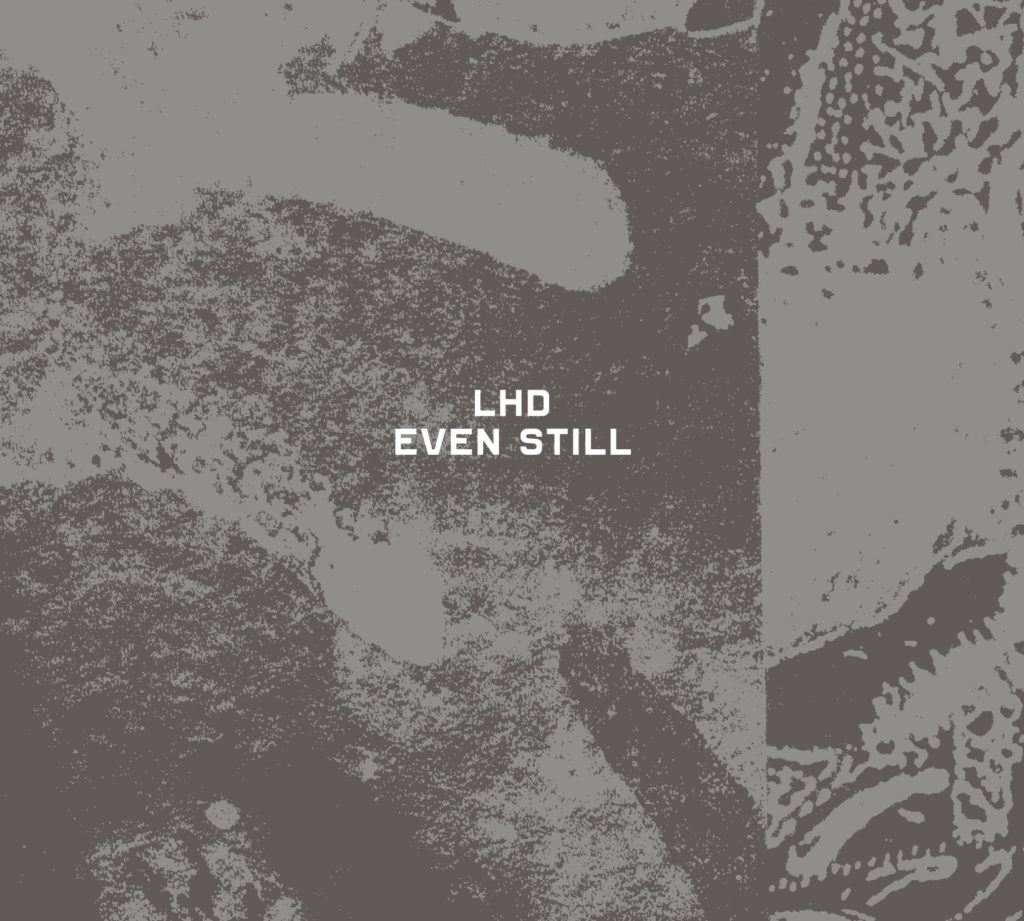
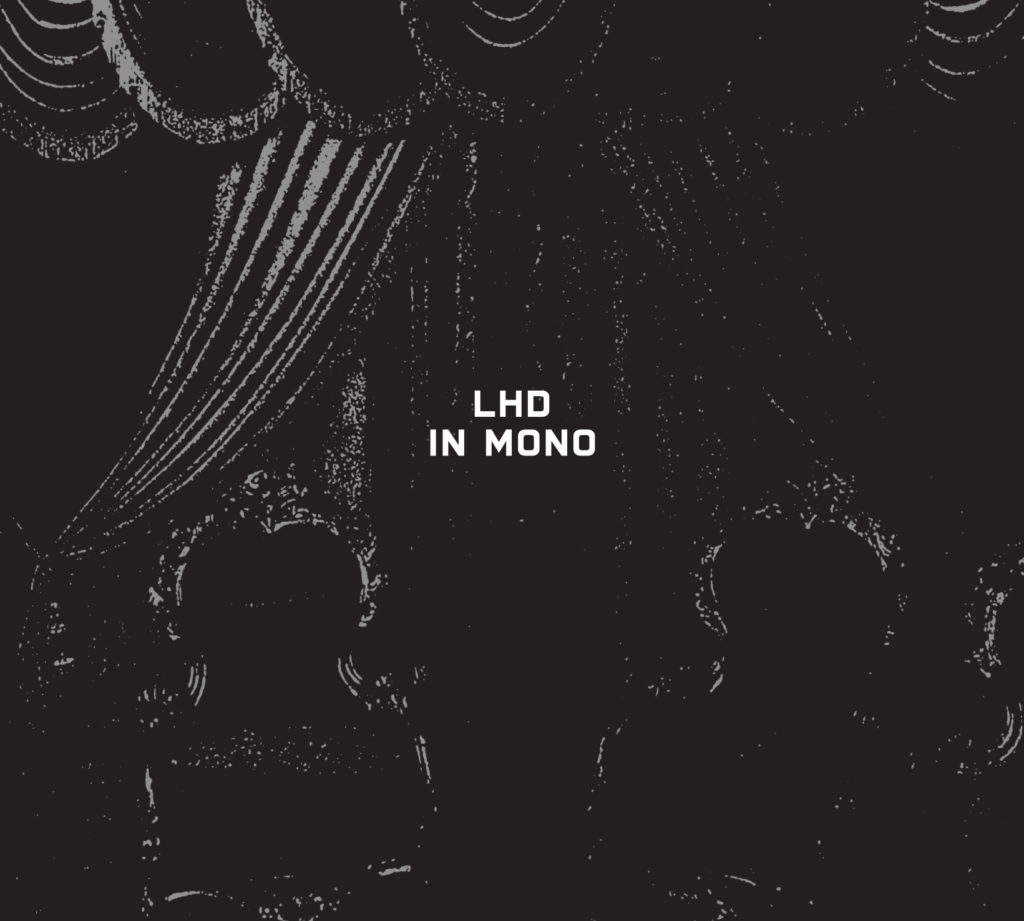
LHD
Even Still 2xCD
Deluxe digipak reissue for 2020!
Two-and-a-half hours covering the complete LHD vinyl discography recorded between 2002 and 2007 by the double flamethrower unit of PHIL BLANKENSHIP and JOHN WIESE. Pure West Coast destruction, maximum density and speaker shred. Includes tracks from these 7-inches: Asthma (Helicopter); Hands of the Priestess (Miisc); Fascination (Swampland); Hotel Fire (P-Tapes); Normandie (Tape Room); Lock Up (Helicopter); Los Angeles (Troniks); and Veiled (Helicopter), and tracks from these LPs: Triple Void (Chondritic Sound): Electrophorus (Collective JYRK): Trap (Troniks), split with Immaculate:Grotesque (Truculent Recordings), plus two additional tracks exclusive to Even Still.
LHD
In Mono 2xCD
Deluxe digipak pressing for 2020!
BURNING IN HELL WITH NO RELIEF. Nearly two full hours of scorched audio and blistering paralysis recorded in Los Angeles between 2002 and 2007 by the double flamethrower unit of PHIL BLANKENSHIP and JOHN WIESE. Compiling four original LHD albums onto two compact discs, featuring the complete recordings of Curtains (PACrec), Young and Restless (Blossoming Noise), Opaque (RRR/Pure) and Limbs of the Fawn (Misanthropic Agenda).
Expanded notes by Chris Sienko:
http://www.john-wiese.com/lhd/lhd-hysterical-blindness.pdf
A Helicopter/Troniks co-release, 2020.
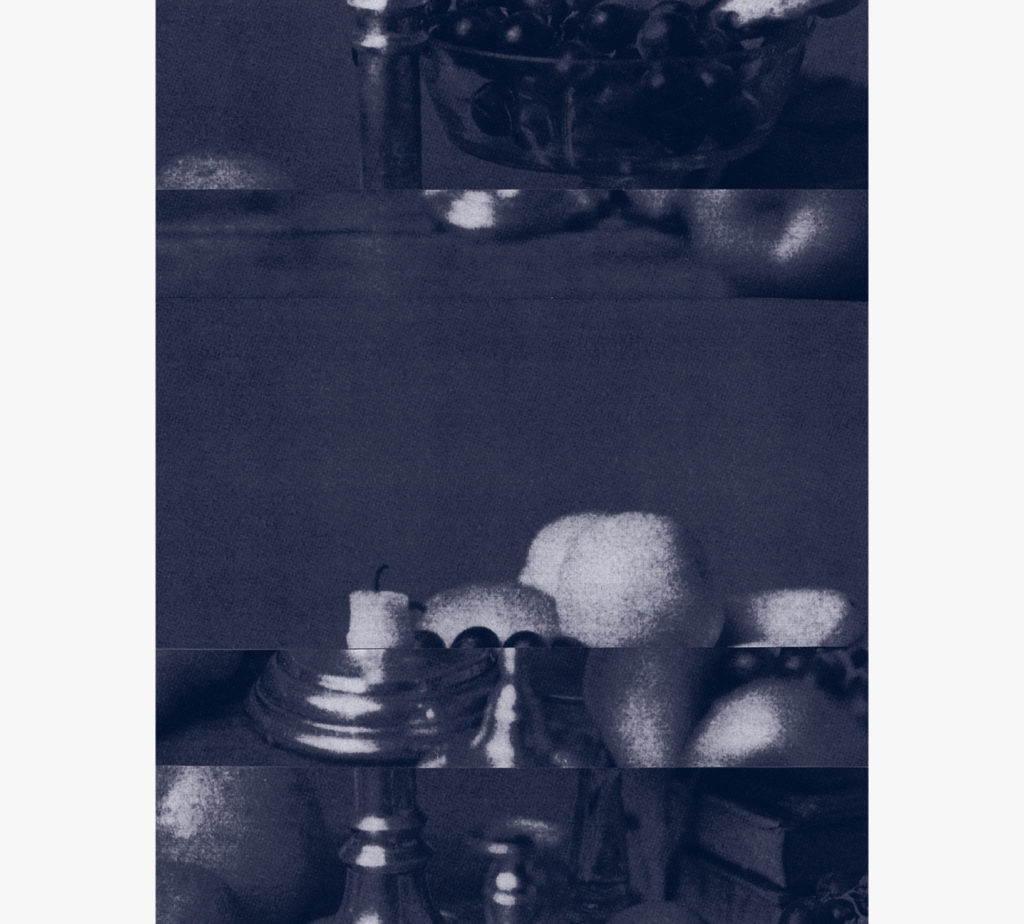
Sissy Spacek
Corpus
Helicopter/Troniks
H 98, TRO-303
Release date: June 5, 2020
1. Peak Everything/ 1
2. Peak Everything/ 2
3. Peak Everything/ 3
4. Peak Everything/ 4
5. Peak Everything/ 5
6. Peak Everything/ 6
7. Spirant (Mix)
8. Air Horn
9. Comic Mirror
10. Unnecessary Conversation
11. Disintegrating
12. Konkret/ 1
13. Konkret/ 2
14. Konkret/ 3
15. Konkret/ 4
16. Konkret/ 5
17. Konkret/ 6
18. Konkret/ 7
19. Konkret/ 8
20. Konkret/ 9
21. Konkret/ 0
Including: Sarah Bernat, Phil Blankenship, Ted Byrnes, Martín Escalante, Jon Lorenz, Lasse, Marhaug, Sean Matzus, Charlie Mumma, Richard Ramirez, John Rich, John Wiese, C. Spencer Yeh
SISSY SPACEK “Slow Move” CD (Troniks)
A low tech grumble of dynamic basement frequencies and stoic screech to form an uncomfortable and uncompromising electronic wail from the depths.
White Gold at Human Resources, Los Angeles, California, November 16, 2016
http://www.iheartnoise.com/
Sissy Spacek “Harm 2” one-sided LP (Troniks)
Mailorder here.
Sissy Spacek – Wreck CD (Phage Tapes) / Digital
Sissy Spacek – Wreck CD (Phage Tapes) / Digital
Phil Blankenship likes nasty films
Dazed Digital
http://www.dazeddigital.com/artsandculture/article/14706/1/phil-blankenship-likes-nasty-films
